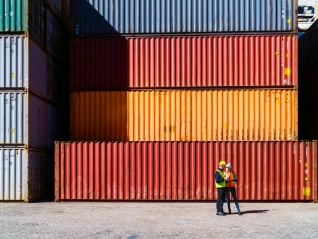接收關於 Atradius 經濟學家的最新見解、企業付款習慣年度回顧、產業績效等信息的實時推送。

我們的行業專家報告和白皮書

最新新聞和見解

最新博客

指尖上的有用指南

關於信用保險的常見問題

卓越信用管理流程和踐的案例

我們各類客戶的評價
Tariffs and growing protectionism could weigh on household spending


Pharmaceuticals businesses throughout the world are reviewing their operational and trading...

預計 2025/2026 年 化學品生產增長 將因美國關稅 而放緩

貿易緊張局勢引發更多 破產案例

US business response to shifting trade policies

在分裂的地區尋找避風港

Tariffs and related uncertainty causing a large negative impact
顯示7項, 共207項
Thanks to this partnership, our clients in Spain can become sellers on Alibaba.com’s B2B marketplace without paying an entry fee


Europe has committed to a new era in military...

Trade tensions, AI investment and geopolitical shifts dominate the global trade agenda. The key takeaway: business must...

The US President’s latest tariff threat exposes the weaponised interdependence that has become a flashpoint for...

Navigating global payment risk in a year of rising insolvencies and shifting customer behaviour

Our Q3 2025 Risk Map update underscores the widespread nature of country risk...

Political gridlock and rising debt in France risk undermining eurozone stability and business confidence
顯示7項, 共59項
Credit insurance supports international trade by turning risk into opportunity, empowering firms to trade confidently and stay financially strong


This guide covers key steps to strengthen credit management, reduce risk, and protect cash flow

Having a credit management system that operates seamlessly with the rest of your business is...

In an interconnected and volatile global economy, falling exports are more than a trade concern. They can signal...

Global disruptions can hit cash flow hard. Credit insurance helps businesses stay resilient, absorb shocks, and keep trade moving

Many businesses underestimate the true impact of buyer credit risk assessment. This oversight can quietly erode profitability

Resilience planning can be the difference between business growth and catastrophic failure
顯示7項, 共27項
Every customer is a potential risk. The larger and more solvent they are, the greater the risk. In January 2023, Brazil...


Atradius 協助 Park Polymers 迅速判斷客戶的信用價值,讓該公司得以迅速談定新客戶,也能提高原有客戶的信用限額。信用保險幫助 Park Polymers 實現了業務拓展。

EnCom Polymers 位於美國印第安那州伊凡斯維爾,該公司董事長 Larry Beard 解釋了他如何在 Atradius 貿易信用保險的支援之下放心拓展業務。

我們與 Vinci Construction France 合作已經超過四年。財務總監 Tony Carron 強調,雙方合作最大的優勢在於我們能在其子公司的日常活動中提供靈活的服務。

傳統與現代技術——像 Bochumer Verein Verkehrstechnik(簡稱 BVV)這樣能夠充分結合二者的公司並不多。 BVV 自 1842 年起在波庫製造鑄鐵產品,是鋼材加工業的先鋒。該公司以鐘鑄造起家,不久後鐵路產業興起,該公司很快就開始生產無縫輪胎。

我們在荷蘭為 Continental Banden Groep B.V 提供信用保險已經超過 40 年的時間。該公司總監 Bert Stellinga 表示,Atradius 對輪胎行業的瞭解使 Continental Banden Groep B.V 獲益良多。

Metalco Incorporated 位於美國伊利諾州芝加哥,該公司董事長兼持有人 Ben Green 解釋了 Atradius 貿易信用保險如何幫助他大膽談定新業務。
Omron 在中美貿易關係以及區域製造轉型帶來的不確定性的同時,達成永續成長的佳績。


FERM (International) 利用 Atradius Dutch State Business (DSB) 及 DGGF 提供具競爭力的付款條件,並減少面向開發中國家的信用風險。

時尚品牌 El Ganso 認為自己可以從西班牙國內新創公司,成長為成功的國際企業,要歸功於我們的支援。

逾期付款客戶促使內容行銷商 KMOdynamoo 購買 Atradius 信用保險保單,並實現更出色的債務人管理。

Calidad Pascual 與國際信用保險公司 Crédito y Caución Atradius 進行合作,取得有關國際市場的額外瞭解。

Janson Bridging (International) 利用 Atradius Dutch State Business (DSB) 的出口信用保險為新興經濟體的客戶提供優惠的信用條件.

我們透過保持開放對話,並提供見解與寶貴的信用資訊,幫助 Brook Green Supply 提升其內部信用風險管理系統。







































